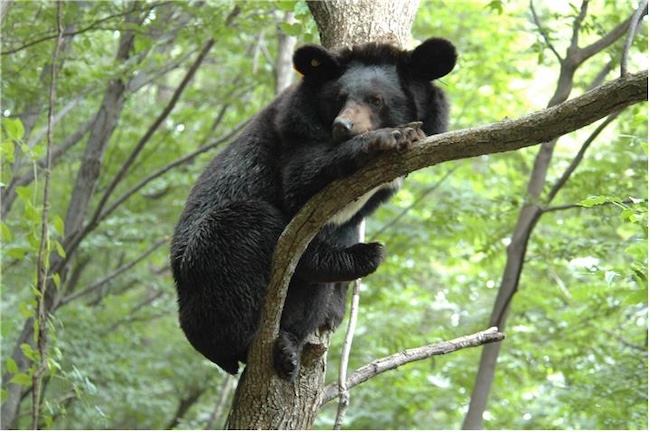SEJONG, Oct. 30 (Korea Bizwire) – Two decades after launching an ambitious species restoration project, South Korea has succeeded in bringing its native Asiatic black bears, also known as moon bears, back from the brink of extinction.
The population has grown to approximately 80 bears in the wild, marking a significant conservation milestone.
These bears, which feature prominently in Korea’s founding mythology, were once a common sight in the country’s mountainous regions until the 1950s.
However, widespread poaching for their bile, used in traditional medicine, drove them to near extinction. The last documented sighting of a wild moon bear was in 1983, when one was found dead from poacher’s bullets.
In response, the government designated the species as endangered in 1998. The restoration project began in earnest in 2004 when six bears from Russia were released into Jirisan National Park. The initiative has since become a symbol of successful wildlife conservation in South Korea.
The species reached a crucial milestone in 2009 when the first cubs were born in the wild. By 2022, the population had grown to include fourth-generation bears, indicating successful adaptation to their Korean habitat. Scientists estimate that a minimum of 50 bears is needed for long-term species survival.
Moon bears, named for the distinctive white crescent marking on their chest – unique to each individual like a human fingerprint – can grow to about 190cm in length. Despite popular misconceptions about bear aggression, these animals typically avoid human contact.
At the Wildlife Conservation Center’s Southern Conservation Center in Gurye, visitors can observe several protected moon bears. These bears, either caught in traps or repeatedly found foraging in agricultural areas, were deemed unsuitable for release.
While only three bears are currently on display due to renovations, the center plans to showcase all ten of its resident bears to the public next year.
As the project marks its twentieth year, conservation efforts are shifting from population growth to management. Since 2017, the bears have begun expanding beyond Jirisan, with three individuals now inhabiting the Deogyusan and Jangan mountain areas. This expansion has prompted new management strategies to minimize human-wildlife conflict.
“While we can’t track every bear, we focus on monitoring those active in lower elevations and inform local residents of their presence,” a park official explained. “We’re also working to introduce bear spray, which is currently unavailable in Korea.”
The official emphasized that coexistence is possible through basic precautions: “Following designated trails and hiking during daylight hours are key safety measures. Our goal is for these bears to be recognized not just as a species to be restored, but as integral members of our natural ecosystem.”
Lina Jang (linajang@koreabizwire.com)







